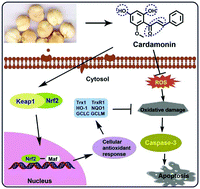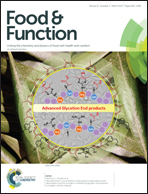Activation of Nrf2-driven antioxidant enzymes by cardamonin confers neuroprotection of PC12 cells against oxidative damage
Abstract
Oxidative stress represents a disorder of the redox equilibrium between the production of free radicals and the capability of cells to eliminate them. As subversion of this redox balance is thought to initiate various diseases, living cells maintain a redox equilibrium diligently. More and more pieces of evidence show that oxidative stress has already become a common risk factor in the pathogenesis of neurodegenerative disorders. So, considerable importance has been given to the prevention of oxidative stress as a potential therapeutic strategy. It is well known that the Nrf2-ARE pathway represents one of the most important cellular endogenous defense mechanisms against oxidative stress. Activation of Nrf2 signaling induces the transcriptional regulation of multiple ARE-dependent antioxidant defense genes. Here, we showed that cardamonin (CD), a chalcone isolated from Alpinia katsumadai, attenuated cell death induced by hydrogen peroxide (H2O2) and 6-hydroxydopamine (6-OHDA) in PC12 cells. Pretreatment of PC12 cells with CD dose-dependently upregulated the expression of phase II antioxidant molecules governed by Nrf2. In contrast, CD failed to provide neuroprotection after silencing Nrf2 expression, indicating that this cytoprotection may be mediated by the activation of transcription factor Nrf2. Our results demonstrate that CD is a novel small molecule activator of Nrf2 in PC12 cells, and suggest that CD may be a potential candidate for the prevention of oxidative stress-mediated neurodegenerative disorders.



 Please wait while we load your content...
Please wait while we load your content...